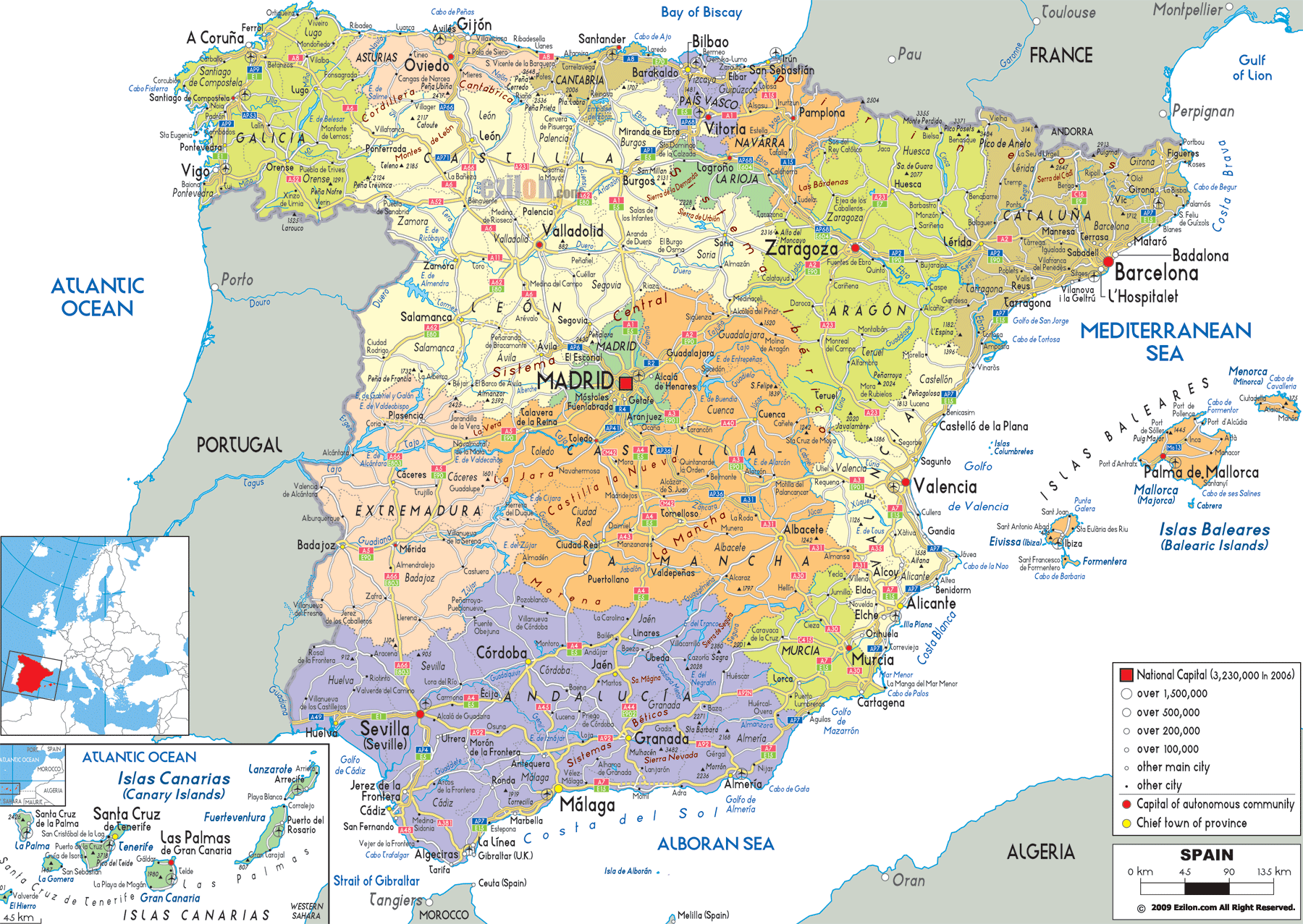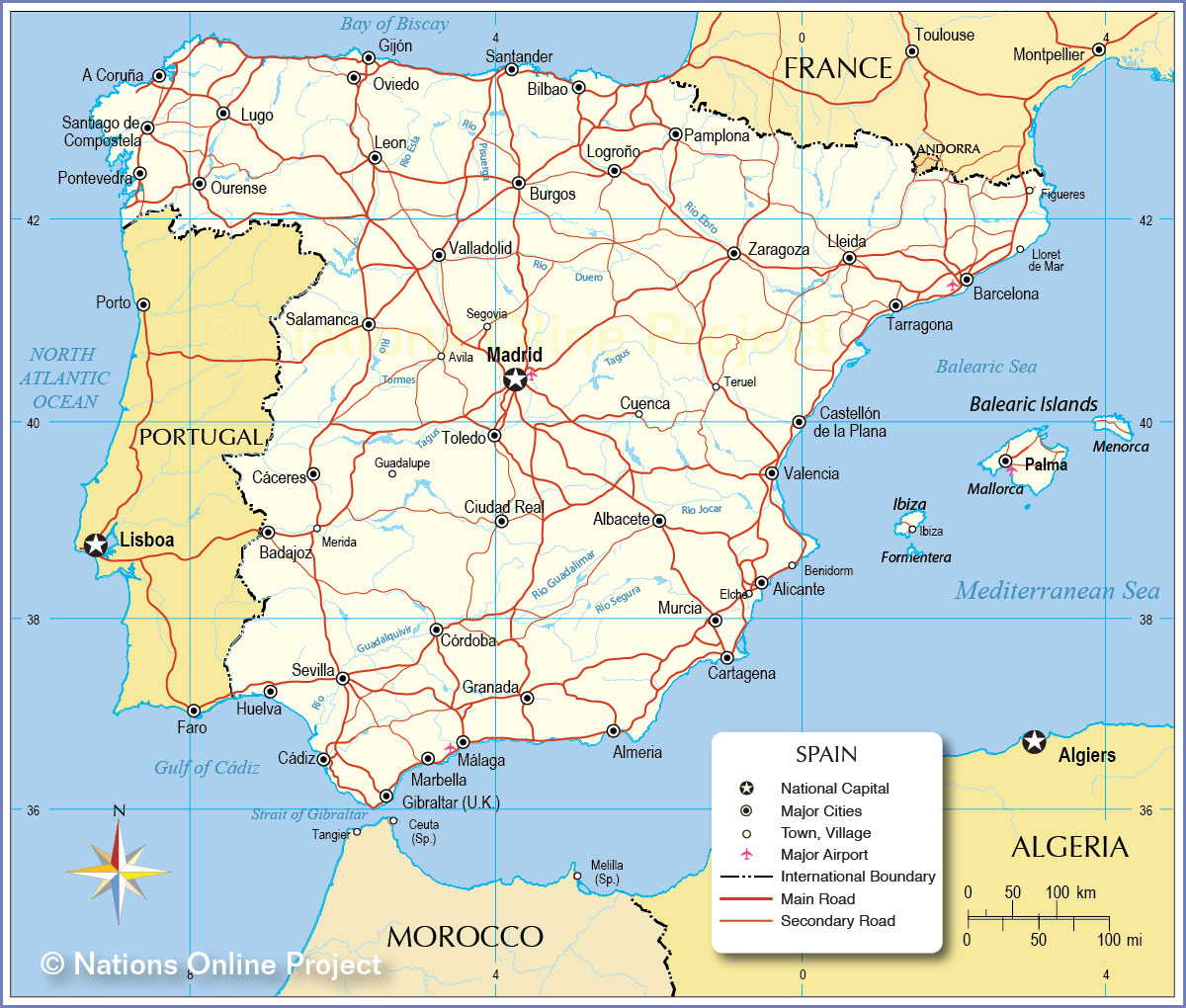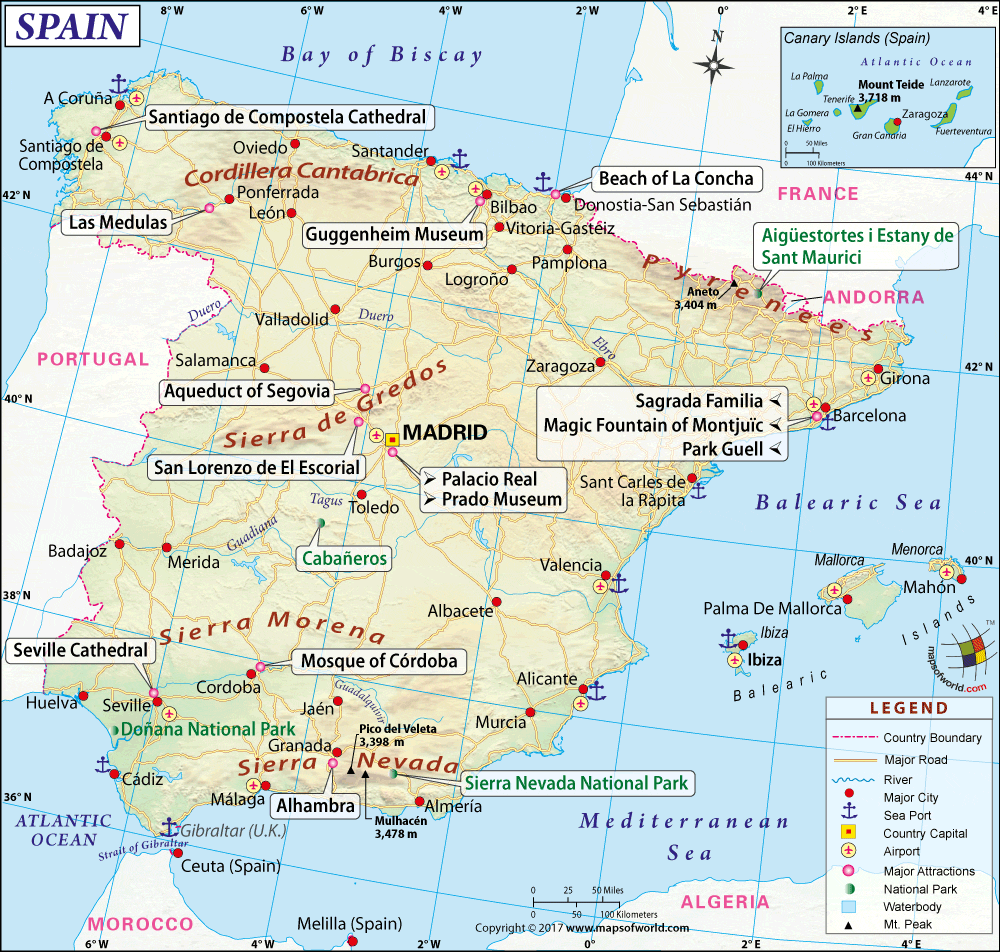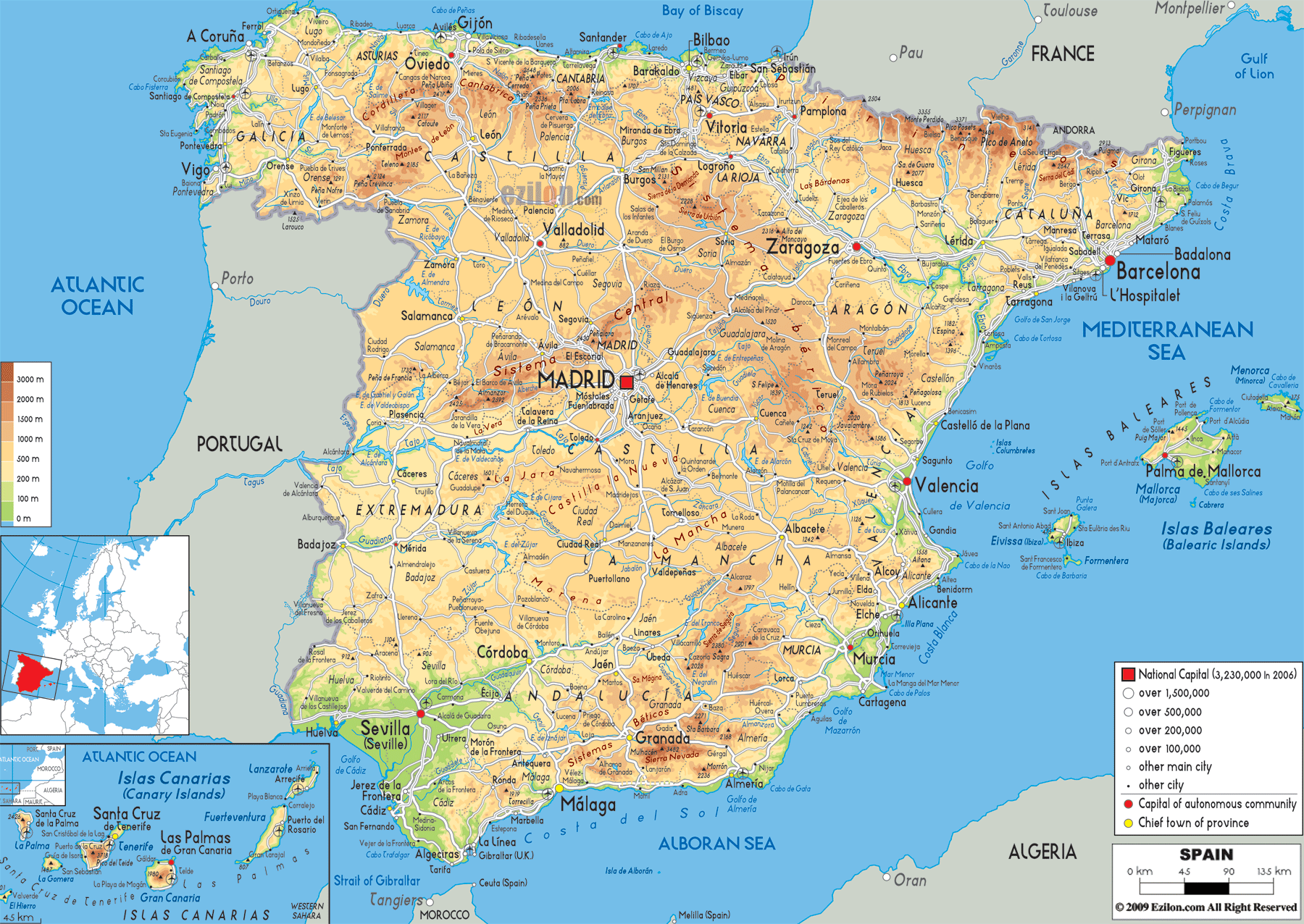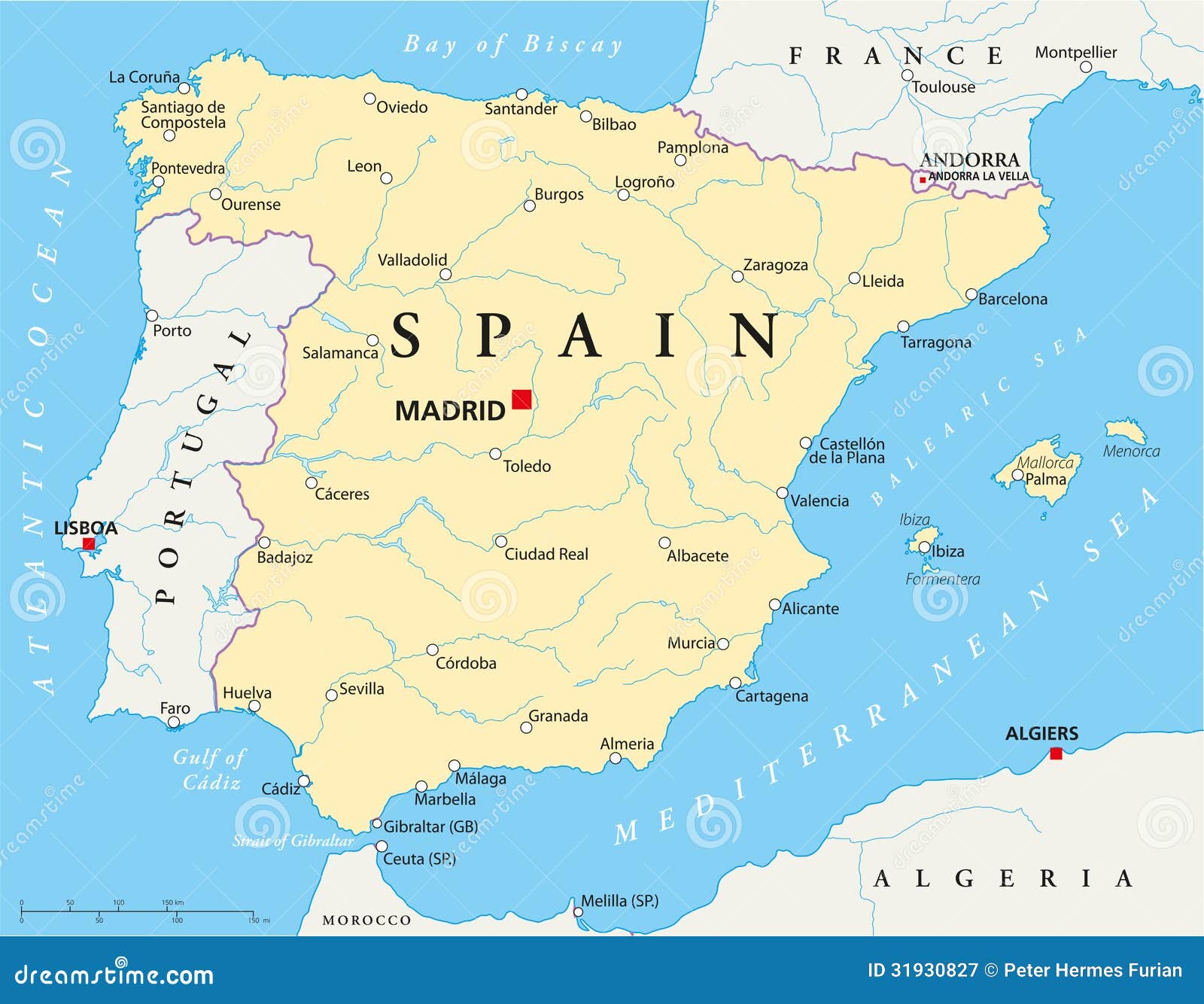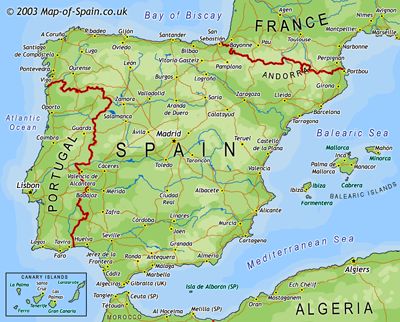![Location of Spain (dark green)– in Europe (green & dark grey)– in the European Union (green) – [Legend]](https://upload.wikimedia.org/wikipedia/commons/thumb/2/21/EU-Spain.svg/250px-EU-Spain.svg.png) Spanish territory also includes two archipelagos; the Balearic Islands, in the Mediterranean Sea, and the Canary Islands, in the Atlantic Ocean off the African coast; two major exclaves, Ceuta and Melilla, in continental North Africa; and the islands and peñones (rocks) of Alborán, Alhucemas, Chafarinas and Vélez de la Gomera. With an area of 505,990 km2 (195,360 sq mi), Spain is the second largest country in Western Europe and the European Union, and the fourth largest country in Europe. By population, Spain is the sixth largest in Europe and the fifth in the European Union.
Spanish territory also includes two archipelagos; the Balearic Islands, in the Mediterranean Sea, and the Canary Islands, in the Atlantic Ocean off the African coast; two major exclaves, Ceuta and Melilla, in continental North Africa; and the islands and peñones (rocks) of Alborán, Alhucemas, Chafarinas and Vélez de la Gomera. With an area of 505,990 km2 (195,360 sq mi), Spain is the second largest country in Western Europe and the European Union, and the fourth largest country in Europe. By population, Spain is the sixth largest in Europe and the fifth in the European Union.Modern humans first arrived in the Iberian Peninsula around 35,000 years ago. Iberian cultures along with ancient Phoenician, Greek and Carthaginian settlements developed on the peninsula until it came under Roman rule around 200 BCE, after which the region was named Hispania. In the Middle Ages, the area was conquered by Germanic tribes and later by the Moors. Spain emerged as a unified country in the 15th century, following the marriage of the Catholic Monarchs and the completion of the centuries-long reconquest, or Reconquista, of the peninsula from the Moors in 1492. In the early modern period, Spain became one of history's first global colonial empires, leaving a vast cultural and linguistic legacy that includes over 500 million Spanish speakers, making Spanish the world's second most spoken first language.
